Marcel Breuer’s icon of brutalist architecture in Connecticut is reimagined as a hotel
Marcel Breuer's Armstrong Rubber Building, aka the Pirelli Tire Building, is being transformed into a hotel by architect and developer Bruce Redman Becker
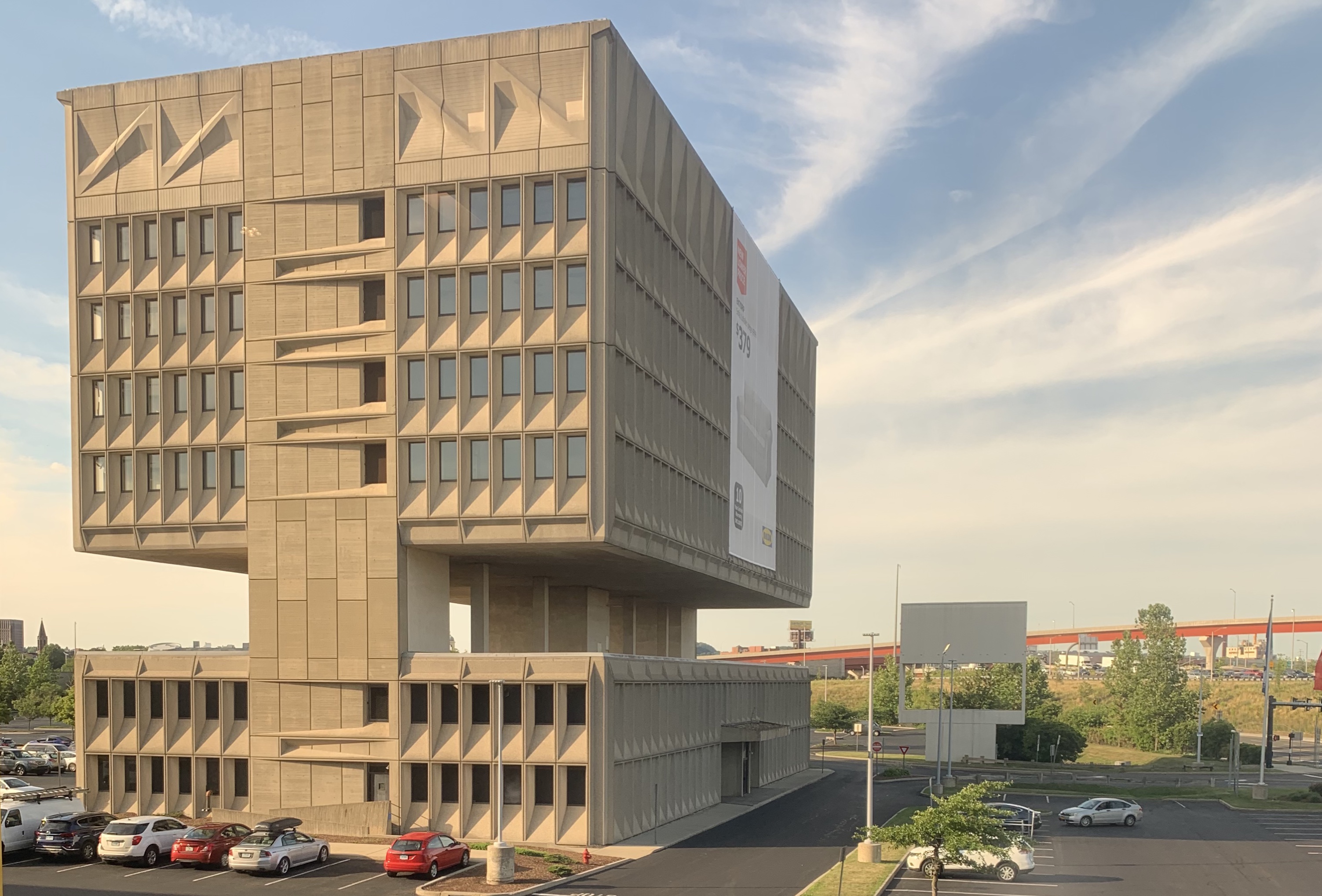
Iconic examples of landmark architecture might not typically be found along major highways, but this is exactly where this brutalist architecture masterpiece, designed by Marcel Breuer, has cut a recognisable figure since it was completed in 1970. Located in New Haven, Connecticut, just off of the Interstate 95, the main north-south highway running along the east coast of the United States, the concrete behemoth was first created for the Armstrong Rubber Company, a tyre manufacturer – making its location apt.
Originally designed to house the company’s administrative offices as well as a research and development space, Breuer’s sculptural concrete building is interrupted by a void of negative space. This was intended to help buffer and reduce sound for the offices above from the research labs below. It was finished with a façade created from pre-cast concrete panels that offer shade and protection from glare, while creating a dynamic visual tension. The building, which was bought by Pirelli in 1988 as its North American headquarters, was added to Connecticut’s State Register of Historic Places in 2000.
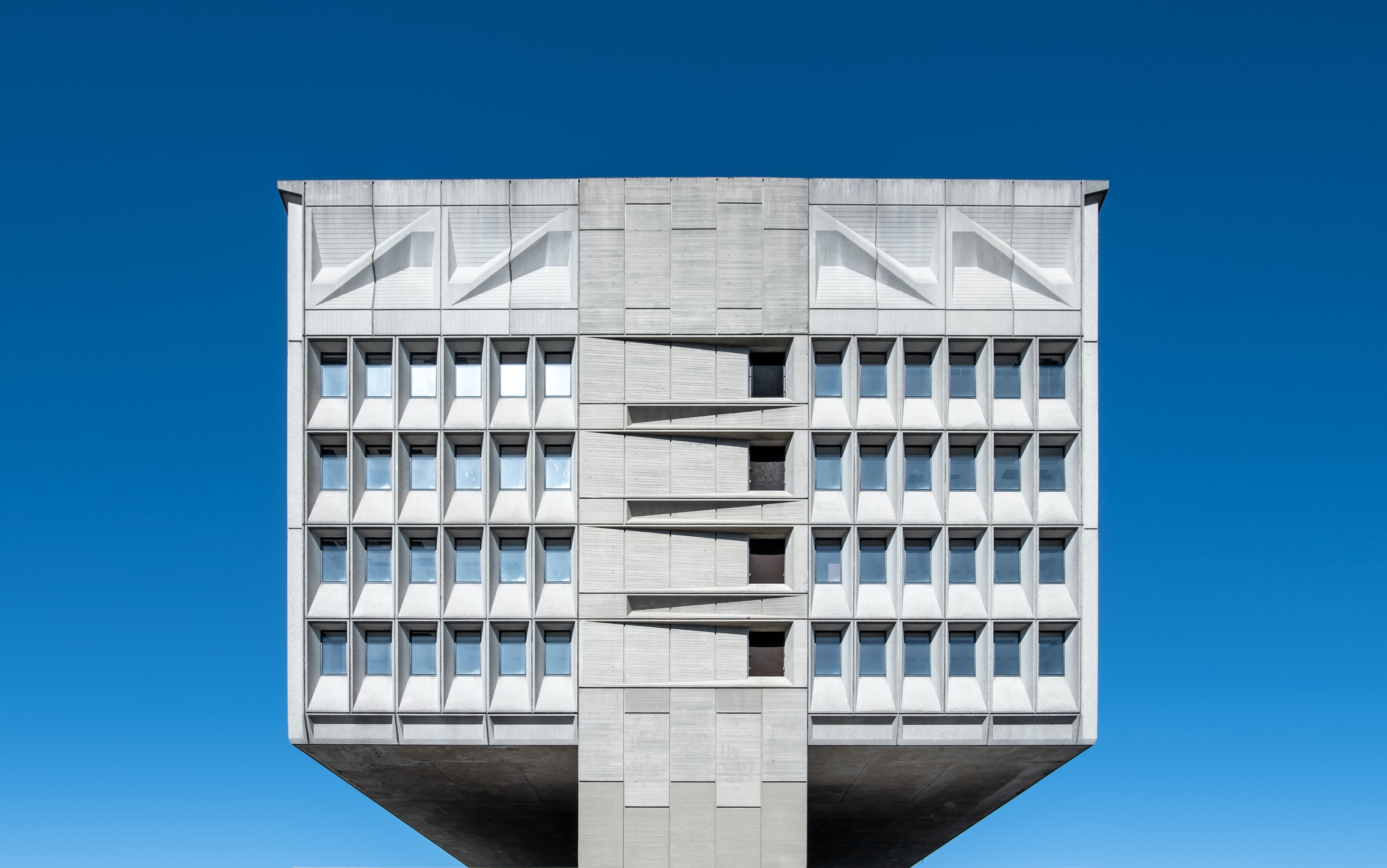
Unfortunately, the Armstrong Rubber Building (or the Pirelli Tire Building, as it became known) has been mired in controversy and underused in more recent years. In 2003, after being bought by Ikea, a large portion of the lower building was demolished to make way for a car park, despite much protest. The building has remained vacant since and it was not until 2018 that the idea to transform it into a hotel began to crystallise. In early 2020, architect and developer Bruce Redman Becker, FAIA purchased the site with plans to adapt it into a 165-room hotel.
Intended to open in late 2021, Hotel Marcel seeks to be a model for sustainable hospitality, through on-site electricity generation and meeting Passive House design standards to maintain interior temperatures and air quality and adaptive reuse. Dutch East Design, a New York-based interior design and branding firm, has been charged with reinvigorating the building’s original beauty while heralding its new chapter. Plans include taking advantage of the building’s existing level changes to enhance the inherent dynamism of the space, and reinstating the historic ceiling that serves as a plane for reimagining the original architectural lighting system.
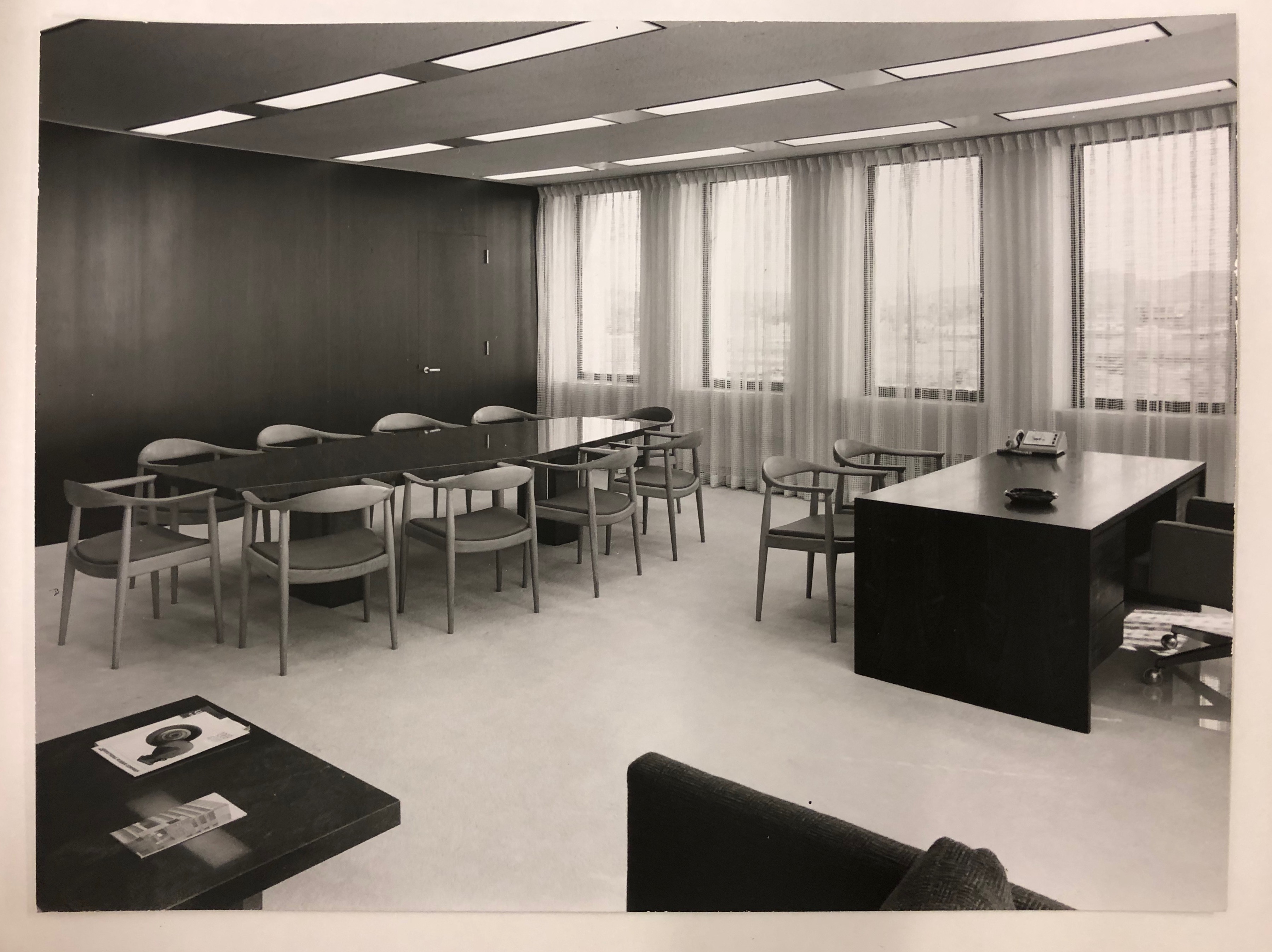
courtesy of the Archives of American Art
‘This project provided an opportunity to reintroduce the public to the raw beauty of brutalism. With the building’s architecture leading the narrative here, the interior design offers a softer juxtaposition to the concrete façade,’ say the firm’s founders Dieter Cartwright, Larah Moravek and William Oberlin. ‘The interior palette includes warm earth tones with a textural build-up of terracottas. In the guest rooms, we wanted to achieve an openness, as they had inherited a narrow footprint. We used the principle of interlocking casegood components, using the closet to accentuate the height of the room and connect to a nightstand that wraps around to the bed wall.
‘Many artifacts of the building were surprising and inspiring, so we worked hard to celebrate them,’ they continue. ‘The cast concrete exterior window panels, for example, have a beautiful angular geometry on the interior as well as the exterior, which we’ve carefully detailed in wood to celebrate the brutalist language in the guest rooms. The building’s modular rigour established a rhythm for us to follow, but within that framework we introduced colours, textures, and furniture profiles that are as welcoming as the exterior is austere.’
Amenities such as a sunken lobby lounge and ninth-floor event space, complete with an interior courtyard, are all part of the plans. Breuer’s monumental creation is set to see better days ahead.
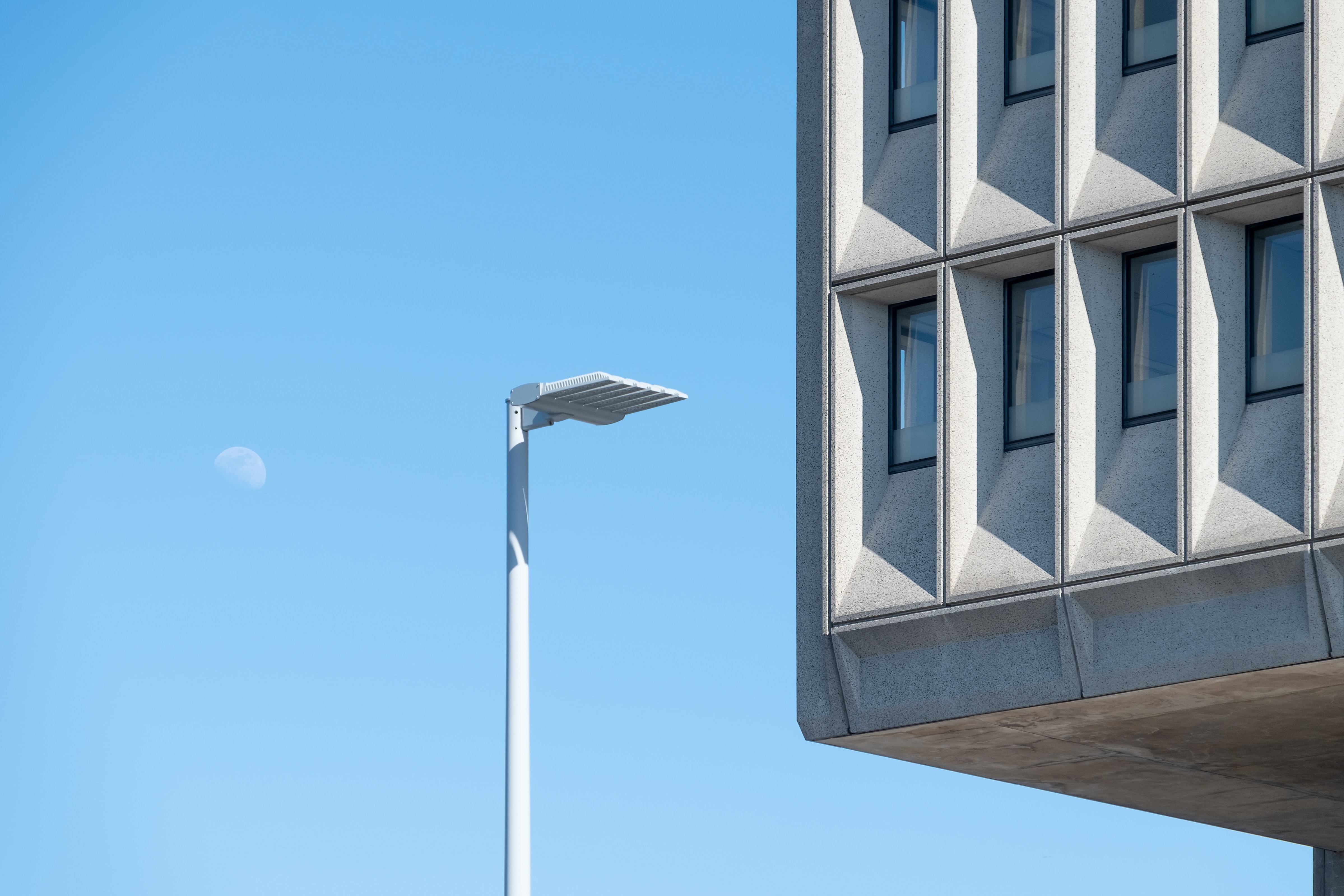
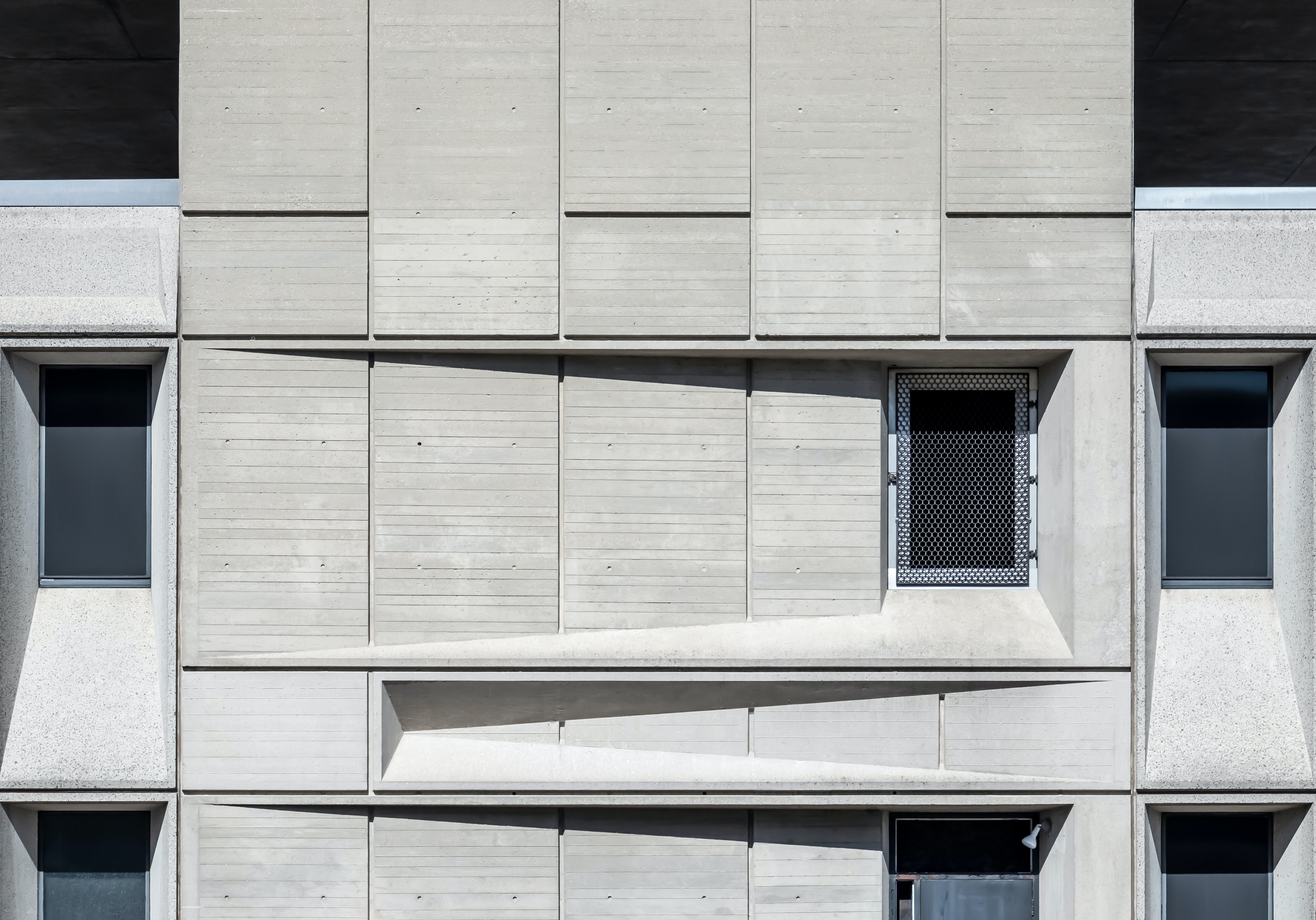
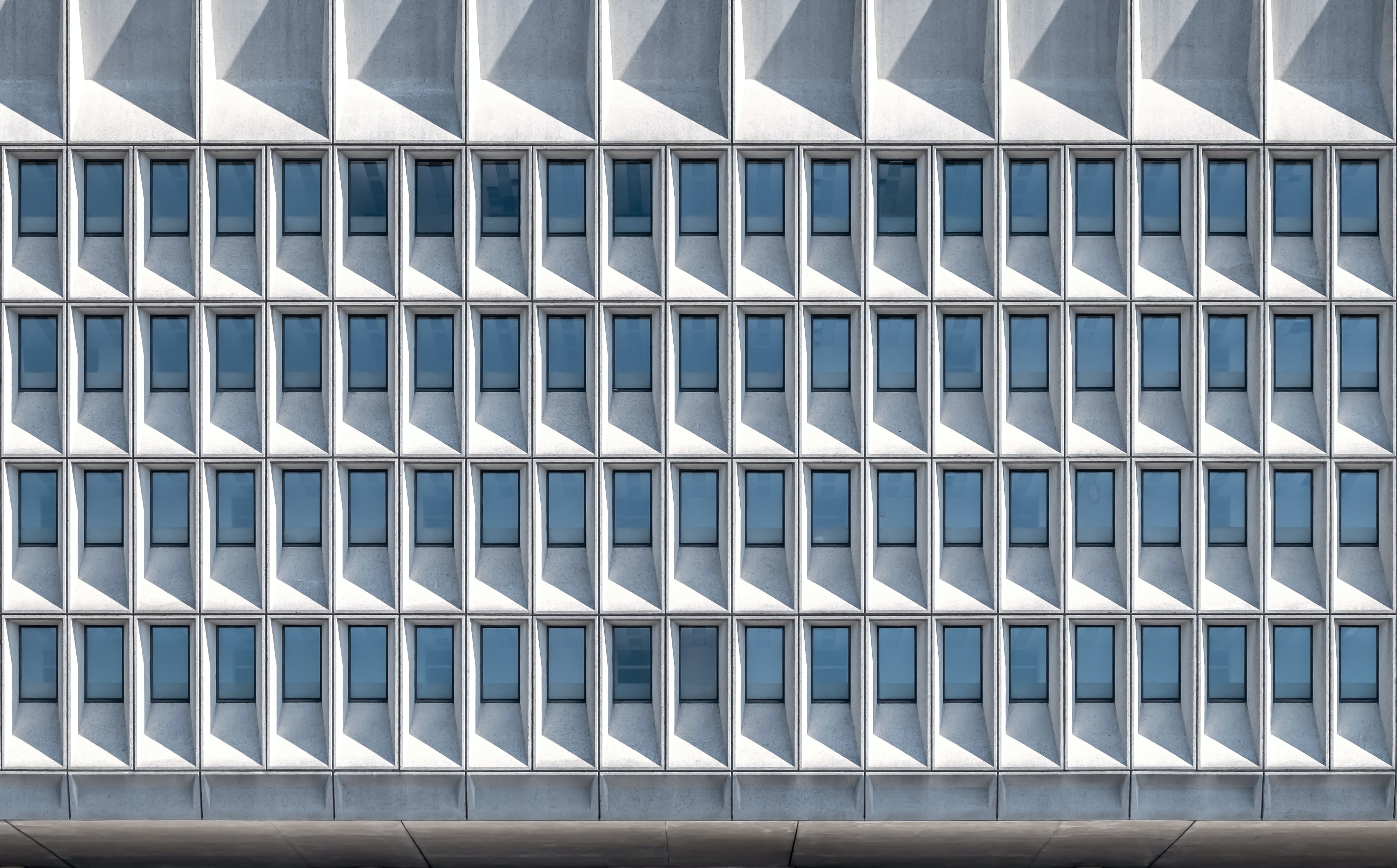
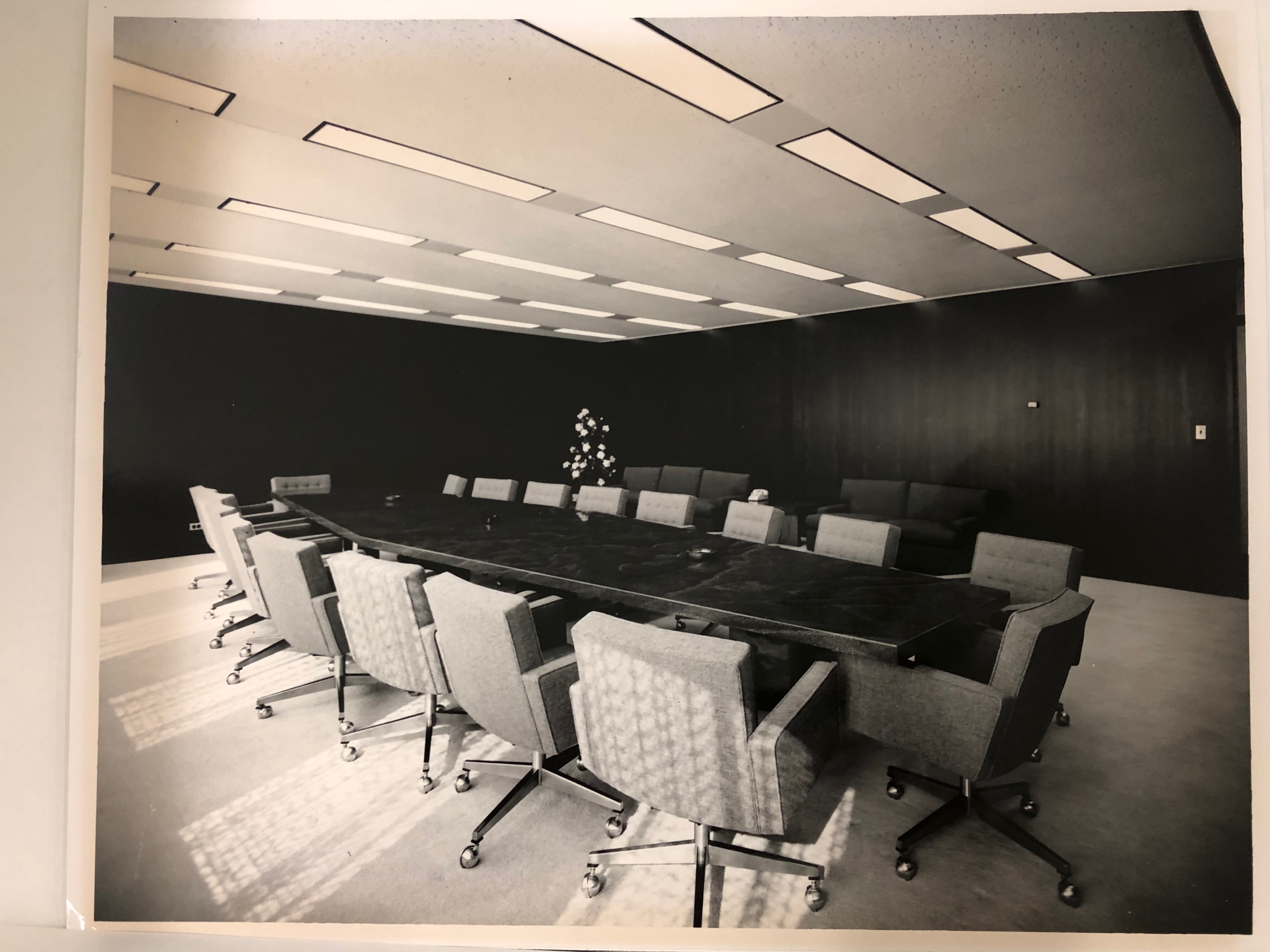
courtesy of the Archives of American Art

Render of lobby area at Hotel Marcel
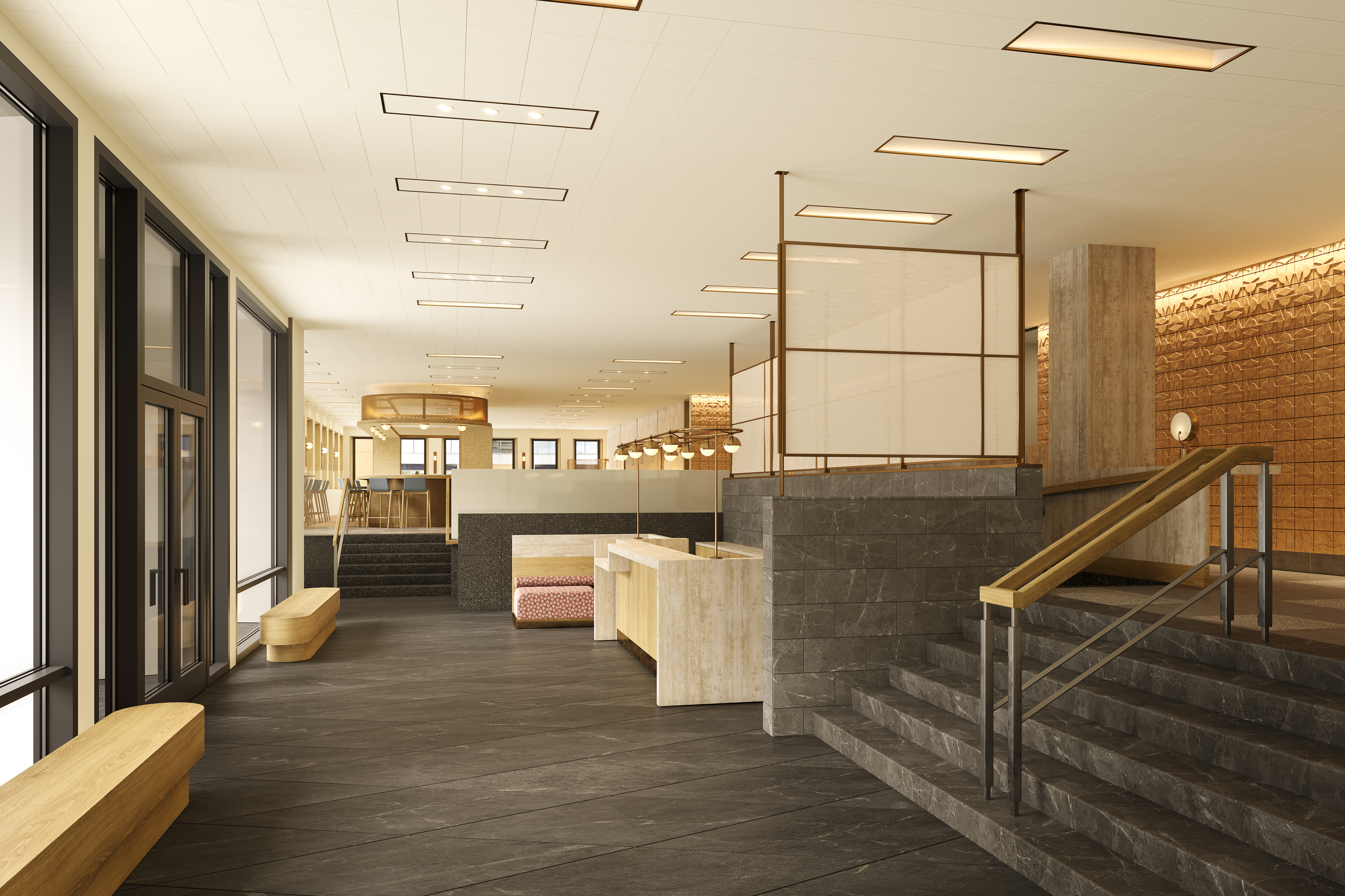
Render of entrance at Hotel Marcel
INFORMATION
Wallpaper* Newsletter
Receive our daily digest of inspiration, escapism and design stories from around the world direct to your inbox.
Pei-Ru Keh is a former US Editor at Wallpaper*. Born and raised in Singapore, she has been a New Yorker since 2013. Pei-Ru held various titles at Wallpaper* between 2007 and 2023. She reports on design, tech, art, architecture, fashion, beauty and lifestyle happenings in the United States, both in print and digitally. Pei-Ru took a key role in championing diversity and representation within Wallpaper's content pillars, actively seeking out stories that reflect a wide range of perspectives. She lives in Brooklyn with her husband and two children, and is currently learning how to drive.
-
 Put these emerging artists on your radar
Put these emerging artists on your radarThis crop of six new talents is poised to shake up the art world. Get to know them now
By Tianna Williams
-
 Dining at Pyrá feels like a Mediterranean kiss on both cheeks
Dining at Pyrá feels like a Mediterranean kiss on both cheeksDesigned by House of Dré, this Lonsdale Road addition dishes up an enticing fusion of Greek and Spanish cooking
By Sofia de la Cruz
-
 Creased, crumpled: S/S 2025 menswear is about clothes that have ‘lived a life’
Creased, crumpled: S/S 2025 menswear is about clothes that have ‘lived a life’The S/S 2025 menswear collections see designers embrace the creased and the crumpled, conjuring a mood of laidback languor that ran through the season – captured here by photographer Steve Harnacke and stylist Nicola Neri for Wallpaper*
By Jack Moss
-
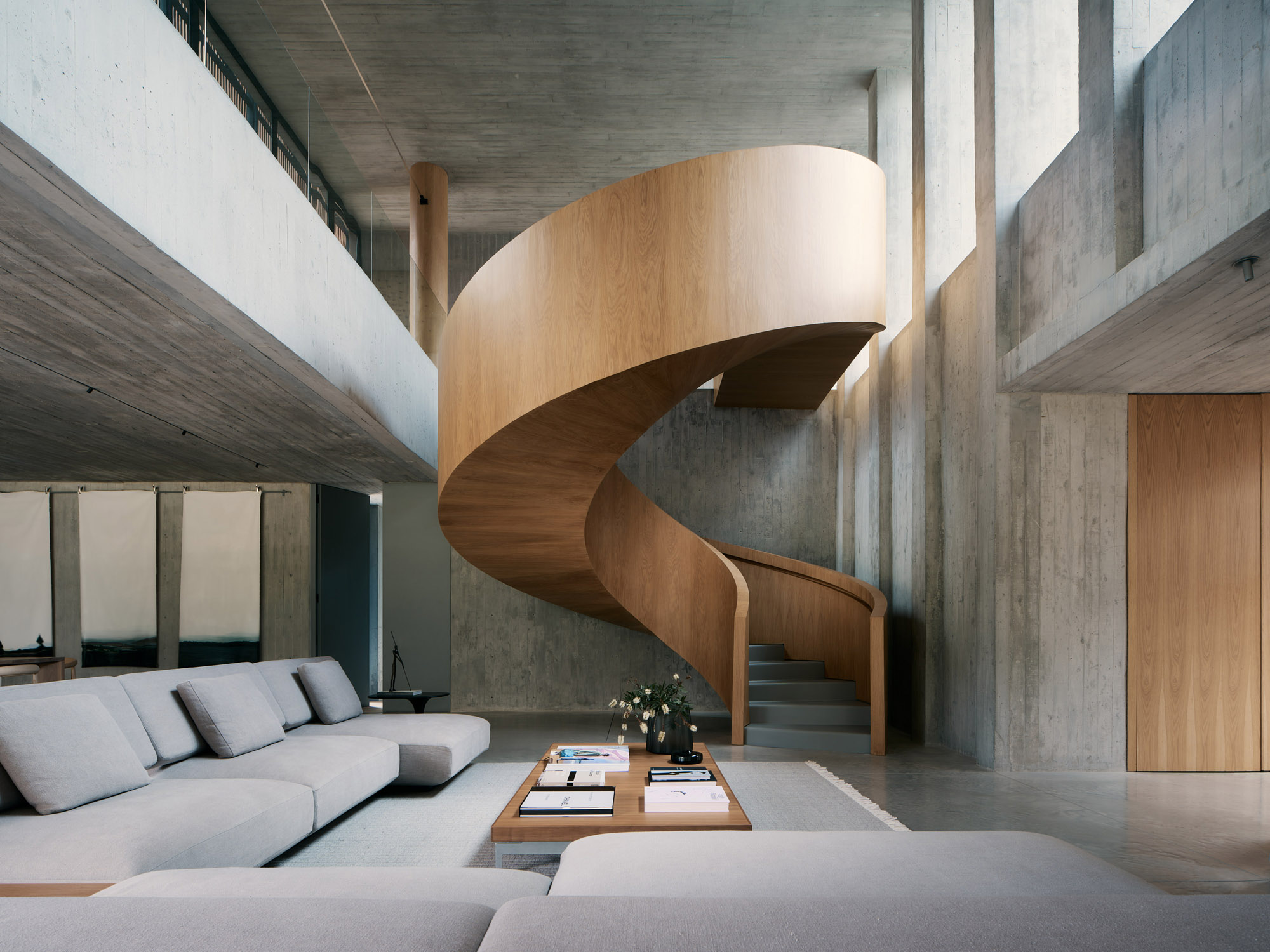 A Medellin house offers art, brutalism and drama
A Medellin house offers art, brutalism and dramaA monumentally brutalist, art-filled Medellin house by architecture studio 5 Sólidos on the Colombian city’s outskirts plays all the angles
By Rainbow Nelson
-
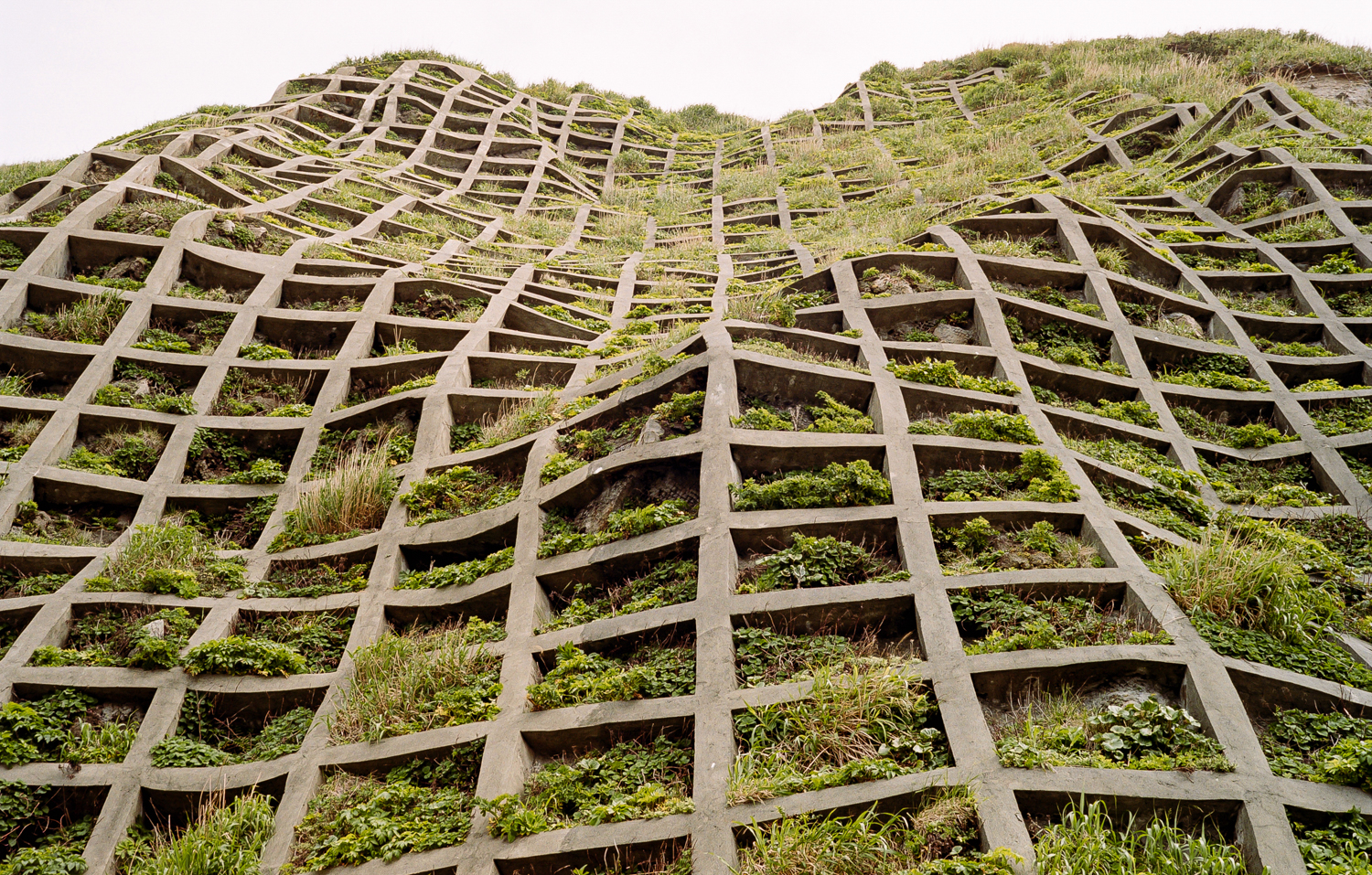 The best brutalism books to add to your library in 2025
The best brutalism books to add to your library in 2025Can’t get enough Kahn? Stan for the Smithsons? These are the tomes for you
By Tianna Williams
-
 We explore Franklin Israel’s lesser-known, progressive, deconstructivist architecture
We explore Franklin Israel’s lesser-known, progressive, deconstructivist architectureFranklin Israel, a progressive Californian architect whose life was cut short in 1996 at the age of 50, is celebrated in a new book that examines his work and legacy
By Michael Webb
-
 A new hilltop California home is rooted in the landscape and celebrates views of nature
A new hilltop California home is rooted in the landscape and celebrates views of natureWOJR's California home House of Horns is a meticulously planned modern villa that seeps into its surrounding landscape through a series of sculptural courtyards
By Jonathan Bell
-
 The Frick Collection's expansion by Selldorf Architects is both surgical and delicate
The Frick Collection's expansion by Selldorf Architects is both surgical and delicateThe New York cultural institution gets a $220 million glow-up
By Stephanie Murg
-
 Remembering architect David M Childs (1941-2025) and his New York skyline legacy
Remembering architect David M Childs (1941-2025) and his New York skyline legacyDavid M Childs, a former chairman of architectural powerhouse SOM, has passed away. We celebrate his professional achievements
By Jonathan Bell
-
 The upcoming Zaha Hadid Architects projects set to transform the horizon
The upcoming Zaha Hadid Architects projects set to transform the horizonA peek at Zaha Hadid Architects’ future projects, which will comprise some of the most innovative and intriguing structures in the world
By Anna Solomon
-
 Frank Lloyd Wright’s last house has finally been built – and you can stay there
Frank Lloyd Wright’s last house has finally been built – and you can stay thereFrank Lloyd Wright’s final residential commission, RiverRock, has come to life. But, constructed 66 years after his death, can it be considered a true ‘Wright’?
By Anna Solomon